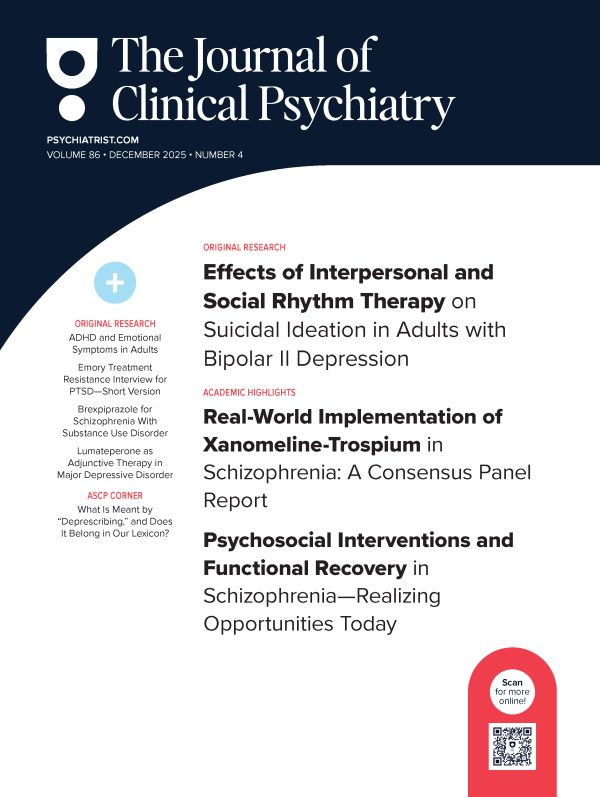Objective: The aim of this study was to examinethe efficacy and the feasibility of a 4-step treatment algorithmfor inpatients with major depressive disorder.
Method: Depressed inpatients, meeting DSM-IVcriteria for major depressive disorder, were enrolled in thealgorithm that consisted of sequential treatment steps (washoutperiod, antidepressant monotherapy, lithium addition, treatmentwith a nonselective monoamine oxidase inhibitor,electroconvulsive therapy). Definition of nonresponse andprogression through the steps of the algorithm was dependent onthe score on the 17-item Hamilton Rating Scale for Depression(HAM-D) at predefined evaluation times. Patients were admittedfrom April 1997 through July 2001.
Results: Of the 203 patients studied, 149 weretreated according to the full algorithm, and 54 patients wereimmediately entered into step 3. Of the 203 patients, 165 (81%)achieved response (> = 50% reduction in HAM-D score) and 101(50%) remitted (final HAM-D score < = 7). Of the 149 patientstreated according to the full algorithm, 129 (87%) responded and89 (60%) remitted. Twenty-four patients (16%) dropped out fromthe algorithm.
Conclusion: Although response withantidepressant monotherapy was less than 50%, successivetreatment according to the 4-step algorithm was very effective ina sample of depressed inpatients. The adherence to the algorithmwas good as shown by a low dropout rate. This study emphasizesthe importance of persisting with standardized antidepressanttreatment in patients who are initially nonresponders to thefirst antidepressant. By the end of the study, more than 80% ofthe patients responded and 50% achieved full remission.
Please sign in or purchase this PDF for $40.00.





